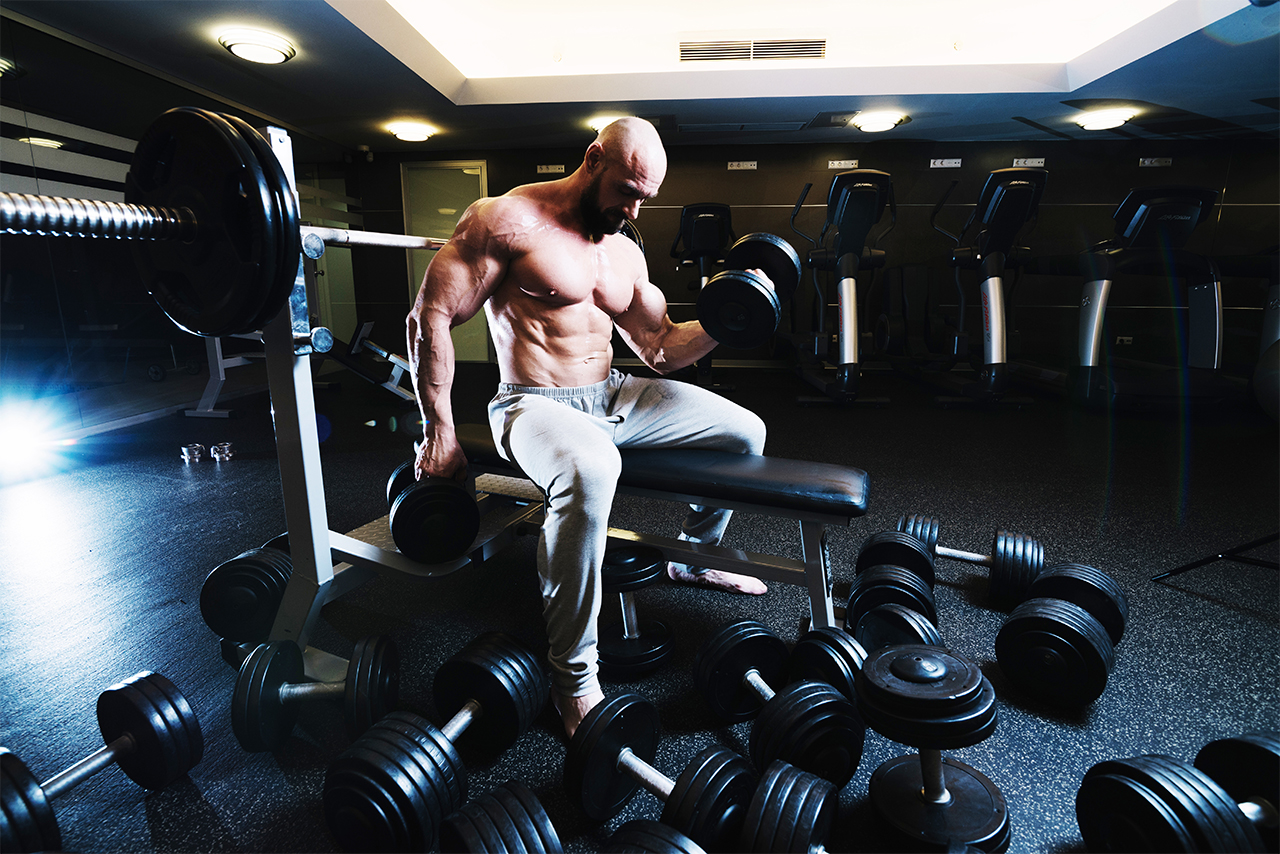De-Adaptation
Before analyzing the basic principle called de-adaptation, we have to clear out the term ‘Adaptation’
It can be defined as – A process, in which the organism gets used to the irritants from the inner and outer environment.
In sports, we observe two types of adaptation:
- Positive adaptation
- Negative adaptation
When beginners start to learn many of the exercises and their variations, when they find the pros and cons of the specialized bodybuilding methods, they meet difficulties from physiological, bio-mechanical and psychological nature along the way.
Sometimes adapting to those difficulties is not an easy process and most of the times it is a very long one for that matter. This “Introductory period” we call ‘Positive adaptation’.
We can conclude, that the positive adaptation is directly pointed at preparing the beginner’s organism to the specific requirements of the weight training workout.
A successful adaptation is the one, where you reach new heights of strength, strength endurance, muscle size and muscle separation.
The interesting thing here, is that after doing the same workout for quite a while, the adaptation gets weaker and weaker, up until the point where you reach the so called ‘negative adaptation’ or with other words, plateau, staying in one place.
This is due to the fact that every living organism strives for a bigger energy efficiency, after every routine action (in our case- resistance training)
How to Overcome Plateau?
There are a couple of principles, which you can use when you reach the plateau, here are two of them:
- Quantity principle – Changing the parameters of the workload: Intensity, volume, density etc.
If, for example you benched 100 kg for 4 sets of 8 reps in many of your workouts, benching 105 kg for 4 sets until failure would have a de-adapting effect, despite the fact that the number of reps is lower. The other way around would also have a de-adapting effect- going on 95 kg with higher reps.
- Quality principle – Intelligently, consequently applying specific bodybuilding principles and methods during the training process.
- Cyclicality – Throughout this principle, besides achieving greater leanness, separation, detail and vascularization of the musculature, we also achieve a strong de-adapting effect.
That is why, this principle is not only suited for people who compete in bodybuilding shows, but for the fitness enthusiasts as well.
In bodybuilding methodologies, we have more than 40 principles, most of which can not be exactly defined and differentiated one from another. Therefore, we have basically, unlimited opportunities for creativity and variation in our training cycle.
If we constantly do the same workout over and over again, we will quickly exceed the limit of muscle size and strength it can give us.
Another way of achieving de-adaptation is changing the exercises used, in order to have a bigger variety and different angles of stress upon the muscle.
Everyone who has used the exercise “Flat barbell bench press” as their main chest movement, and switches onto an “Incline barbell bench press” weeks later, will feel extreme soreness in their upper portion of the chest, after only two days of using it.
In reality, such reaction of the organism means that the muscles took a bigger, unknown stress, which therefore provides a powerful recovery-adapting reaction of the organism.
The smart change in the exercises used and the way of completing the exercises (change in body position, angles, number of sets, reps, types of workouts, intensity and other workload parameters), will be a certain border, between the positive and negative adaptation, that leads to a plateau.
In order to have a constant progress, we must constantly expose our organism to new and diverse loads, that it will adapt to.
Everybody knows that it matters whether you will do the exercise “pull ups” with a wide or a narrow grip, with an overhand grip or an underhand grip.
From this we can conclude that the same exercise (in this case- pull ups), can be done in different ways, in order to focus on the different muscle groups, involved and therefore achieve a deadapting effect.
In conclusion, we can say that if you have an intelligent approach to training, you shouldn’t be a slave of certain things you read on the internet, try being creative and bring diversity and new loads that you adapt to during your training cycle.
“If it ain’t broken- don’t fix it.”
interconnections between the principle of de-adaptation and other principles methods
The principle of progressive overload is the only principle that has more interconnections with the other methods and principles, compared to the de-adaptation principle.
Gradually including the separate principles in our training process is a great example of de-adaptation’s correlations with everything else.
Practically, intelligently including some of the “forgotten” or not so popular principles and methods, leads to a positive adaptation.


